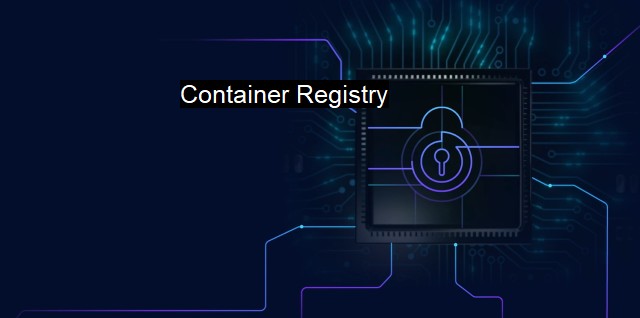What is Container Registry?
The Power and Security of Container Registries: A Key Component for Modern Software Development
Container Registry refers to a type of repository that allows developers to manage, pull, and push container images. The concept of "containers" in software development has evolved dramatically over time to help simplify and streamline the process of creating, packaging, and deploying applications. Largely driving this evolution are technologies such as Docker and Kubernetes, which rely on container images to ensure consistency across various computing environments.In the simple terms, a container includes an application along with all its dependencies, binaries, and libraries, packaged together in a single unit. Notably, a container operates in isolation from other containers, presenting an edge in terms of security since a vulnerability in one container doesn't necessarily expose the others.
In the context of container registries, these play an important role by hosting container images. Developers use these registries as a platform to distribute their containerized applications. Several tech companies, like Google and Amazon, offer proprietary solutions, named Google Container Registry (GCR) and Amazon Elastic Container Registry (ECR) respectively. There are also open-source options, like Docker Hub.
Where threats are increasingly complex and advanced, the use of container registries opens up unique security challenges. Consequentially, they unleash demand for new strategies to ensure the security of container images stored in these registries.
One of the primary threats can stem from registries that publicly host container images. Though convenient, it exposes a potential risk. If these images aren't appropriately secured, they can serve as entry points for attackers to insert malicious code into the application cycle. Hence, it's crucial to ensure that images are thoroughly tested and vetted before they become publicly available.
Once a container image has been verified as safe, it can be hosted within the registry. maintaining security doesn't stop there. Continuous monitoring of the registry is necessary to catch unauthorized access. Any cyber threat seen should immediately stop the affected containers from being spun up.
Also to note is a practice called container signing – a method utilized to verify the authenticity of a container image. In this process, the container images are digitally signed ensuring that they have not been tampered with from the time of their creation to their deployment.
Similarly, a technique known as container scanning can be relied upon to scan a container image and its dependencies for known vulnerabilities. This method greatly minimizes the risk of hosting insecure images within a registry.
The antivirus aspect of Container Registries operates on a similar principle, as antiviruses monitor, ward off, and remove threats to secure a system. They preserve the integrity of container images in registries, right from their development to deployment.
Automated updates are crucial too, to ensure any recent vulnerabilities have been accounted for and the registry runs on the most current version.
As a final word, it should be remembered that the security of a container registry lies not just with these preventive measures, but with a solid, all-encompassing security strategy, updated to contend with evolving cybersecurity threats. In this way, container registries can continue to contribute to our digital landscape, and bolster business growth.

Container Registry FAQs
What is a container registry and how does it relate to cybersecurity?
A container registry is a centralized repository where Docker images and other containers are stored and managed. From the cybersecurity perspective, container registries play a key role in ensuring that only trusted, vetted images are used in production environments.What kind of security features should I look for when choosing a container registry?
When choosing a container registry, it's important to look for features like image scanning for vulnerabilities and malware, access controls for images and repositories, and support for encryption of images at rest. Trusted builds and signed images can also enhance security by verifying the integrity of images.How can a container registry help with antivirus protection in a containerized environment?
A container registry can help with antivirus protection in containerized environments by providing a scanned and verified image repository. These images can be scanned for known vulnerabilities and malware before being deployed, reducing the risk of malicious code being able to execute in containers.What are some potential risks associated with using a container registry for cybersecurity purposes?
Some potential risks associated with using a container registry for cybersecurity purposes include image compromise, unauthorized access to repository contents, and the use of unvetted or outdated images. It's important to establish policies and controls around image creation, testing, and deployment to mitigate these risks.| | A | | | B | | | C | | | D | | | E | | | F | | | G | | | H | | | I | | | J | | | K | | | L | | | M | |
| | N | | | O | | | P | | | Q | | | R | | | S | | | T | | | U | | | V | | | W | | | X | | | Y | | | Z | |
| | 1 | | | 2 | | | 3 | | | 4 | | | 7 | | | 8 | | |||||||